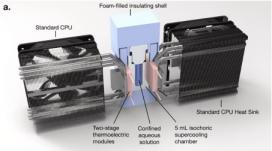Devices Developed by ERC Could Lead to Breakthroughs in the Preservation of Biological Material
The NSF-funded Engineering Research Center (ERC) for Advanced Technologies for the Preservation of Biological Systems (ATP-Bio), co-led by the University of Minnesota and Massachusetts General Hospital, has developed devices that can detect pressure variation and temperature during isochoric supercooling, which could lead to the stable preservation of biological materials.
Modern organ and tissue transplants are often constrained by the inability to preserve the biological material long enough to reach the recipient. The quantitative design approach of the Center’s innovative isochoric detection devices could offer a degree of certainty for how long biological material can be preserved for transplant.
A technique known as isochoric supercooling provides a novel paradigm for preserving biological material, such as tissues and organs, for transplant. The process eliminates the harmful effects of cryoprotective agents and suppresses ice formation inside the tissue or organ. However, the supercooling of biomaterial outside of a controlled laboratory in larger volumes, such as the size of an organ, has not been possible.
Researchers from the Boris Rubinsky Lab at the University of California, Berkeley, developed two new devices that have provided key discoveries in large-volume supercooling and high-pressure freezing. These devices leverage the responsive nature of pressure in closed systems to monitor supercooling processes. Combined with statistical models, these results could pave the way to an unprecedented engineering design for supercooled bio-preservation protocols.



